






| Rhaphigaster nebulosa (Poda, 1761) |







|
|
Scientific name: Rhaphigaster nebulosa (Poda, 1761) Common name: Other names: Mottled shield Bug French name: Punaise nébuleuse Order: Heteroptera Family: Pentatomidae Wingspan : 12-16 mm. Biotope: Hedgerows, parks and gardens, sunny walls. This shield bug can enter into houses in autumn. It usually overwinters on walls covered by Ivy. Geographic area: Europe, Asia, more common in the southern regions than in the northern regions. Observation period : All year round. |
This shield bug is a yellowish grey to brown colour. It can be recognized by its black antennae showing three wide yellowish or white rings on articles 3, 4 and 5 (the ring on article 3 is sometimes hardly visible). The body has notches at the base of the head. The over side shows irregular pale and dark markings. The lateral edges of the abdomen (connexivum) are marked with black and yellowish white. The yellowish white markings are square-shaped Rhaphigaster nebulosa feeds on plants and has only one brood per year. The Brown Marmorated Stink Bug (Halyomorpha halys) has only two white rings on its antennae, the first at the base of article 4, the second from the tip of article 4 to the base of article 5. The white markings of the Brown Marmorated Stink Bug's connexivum are triangular in shape. |
| [To know more about the Rhaphigaster nebulosa] [Next picture] [Top] |
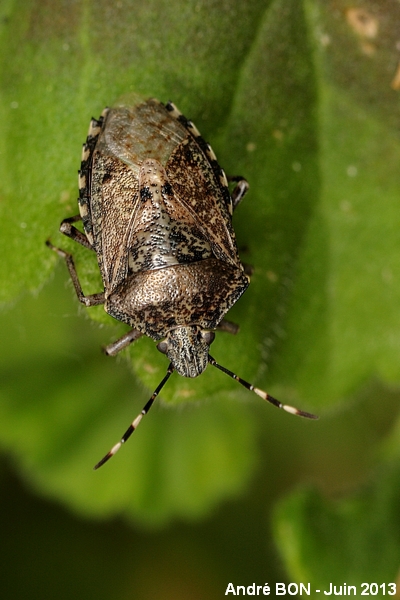
|
I am used to observing Rhaphigaster nebulosa every year on my Raspberry trees. The pictures should be better and better based on my experience and with the acquisition of specific macro lenses and macro accessories. |
| [To know more about the Rhaphigaster nebulosa] [Next picture] [Previous picture] [Top] |
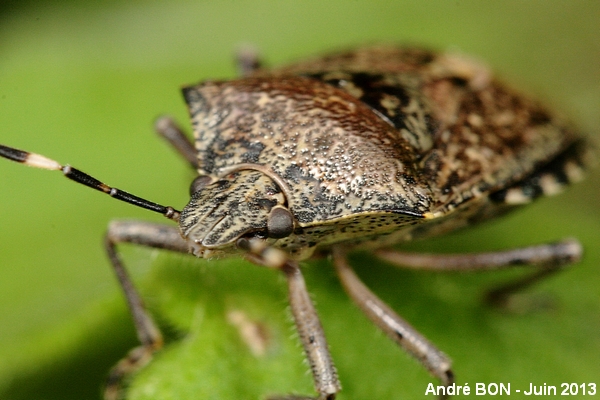
|
I have been able to perform many tries to get the exact focus on the eye. This is easy with shield bugs which are not excessively mobile. |
| [To know more about the Rhaphigaster nebulosa] [Next picture] [Previous picture] [Top] |
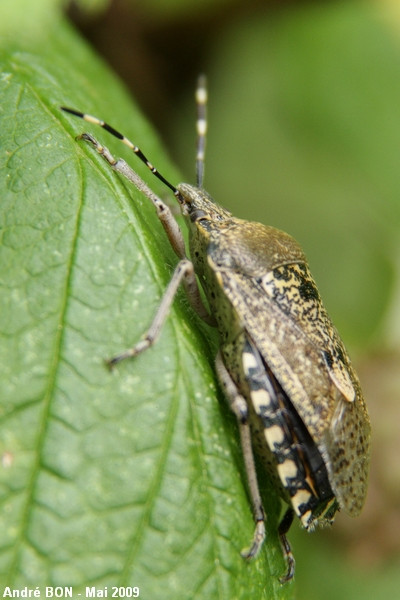
|
Side view. |
| [To know more about the Rhaphigaster nebulosa] [Next picture] [Previous picture] [Top] |
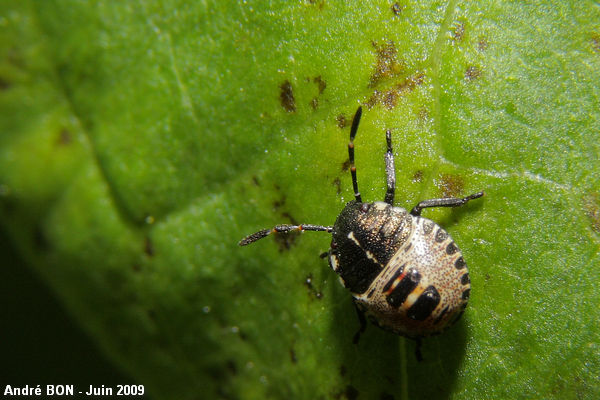
|
Juvenile on Ivy. |
| [To know more about the Rhaphigaster nebulosa] [Next picture] [Previous picture] [Top] |

|
5 moults are required to reach the adult stage. I think that this one is at the fourth instar and needs two moults to reach the adult stage. |
| [To know more about the Rhaphigaster nebulosa] [Next picture] [Previous picture] [Top] |
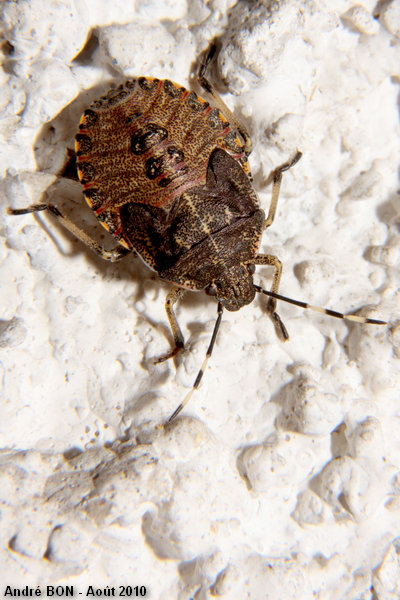
|
5 moults are required to reach the adult stage. I think that this one is at the fifth and last instar and needs only one moult to reach the adult stage. |
| [To know more about the Rhaphigaster nebulosa] [Previous picture] [Top] |
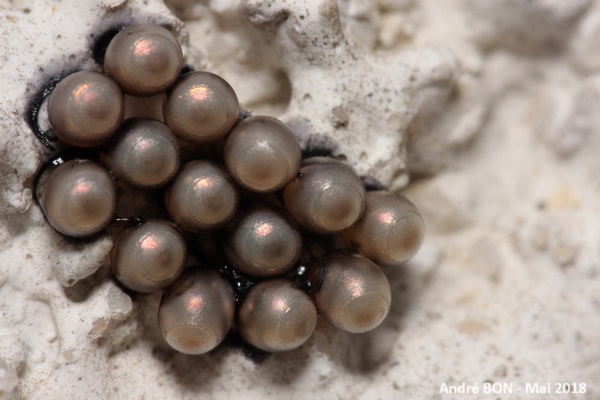
|
Here are the eggs of Rhaphigaster nebulosa. |